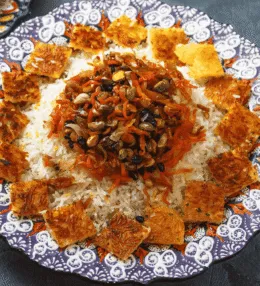
- View
Table of Contents
ToggleGyoza, Japan’s beloved dumplings, they’re a savoury bite sized indulgence that carries both rich flavours and history. These pan-fried pockets of deliciousness are filled with a flavourful mixture of ground meat, vegetables, and seasonings, making them a favourite at izakayas, ramen shops, and home kitchens alike.
With their crispy bottoms, tender fillings, and irresistible dipping sauce, gyoza are a perfect fusion of texture and taste, offering a glimpse into Japan’s love for simple yet exquisite food.
Want to dive deeper into Japanese Cuisine? Don’t miss our post on 26 Traditional Japanese Foods to Try
What Is Gyoza?
Gyoza are Japanese dumplings, traditionally filled with minced pork, cabbage, garlic, and ginger, all wrapped in a thin dough wrapper. What sets gyoza apart is the way they are cooked, first pan-fried to develop a crispy, golden bottom, and then steamed to keep the filling moist and the dough soft.
The result is a perfect balance of textures: crispy on one side and tender on the other, with a juicy, savoury filling that bursts with flavour. While pork is the most common filling, variations abound, including chicken, shrimp, or vegetarian options like tofu and mushrooms.
Gyoza are often enjoyed with a dipping sauce made from soy sauce, rice vinegar, and a touch of chili oil, which adds a tangy, slightly spicy kick to each bite. Whether served as a side dish, snack, or part of a larger meal, gyoza’s appeal lies in its simplicity and its ability to be both comforting and flavourful at once.
Ingredients and Taste
The magic of gyoza comes from its carefully balanced filling and the harmony of textures. The classic gyoza filling typically includes ground pork, finely chopped cabbage, garlic, and ginger, which create a savoury and aromatic base.
A splash of soy sauce and sesame oil adds depth and umami, while green onions provide a touch of freshness. When cooked, the outer wrapper turns golden and crispy on the bottom, while the steamed top remains soft and delicate.
The filling stays juicy and flavourful, with the pork offering richness, the cabbage lending a subtle sweetness, and the garlic and ginger infusing the dumpling with a fragrant warmth.
The dipping sauce is made from equal parts soy sauce and vinegar, sometimes with a hint of chili oil, enhances the dumpling’s flavours, providing a tangy, savoury contrast that keeps you coming back for more.
Each bite of gyoza is a delightful mix of textures and flavours, making it hard to stop at just one. It’s no wonder gyoza has become a favourite not only in Japan but around the world.
A Taste of History
Although gyoza is now synonymous with Japanese cuisine, its origins can be traced back to China, where it was inspired by jiaozi, Chinese dumplings that have been enjoyed for centuries.
It was during the early 20th century, after Japanese soldiers returned from China following World War II, that gyoza began to take on its own identity in Japan. The Japanese version features thinner wrappers and a more finely minced filling, with garlic becoming a key ingredient, a departure from its Chinese counterpart.
Over the decades, gyoza evolved into a popular dish in Japan, especially in casual dining settings like ramen shops and izakayas. Its ease of preparation and adaptability made it a household staple, and today, gyoza is enjoyed across the country in various forms; fried, boiled, or even grilled.

Gyoza (Japanese Dumplings)
Ingredients
- 250 g ground pork or chicken
- 1 cup finely chopped napa cabbage
- 2 green onions finely sliced
- 2 cloves garlic minced
- 1 tbsp ginger grated
- 1 tbsp soy sauce
- 1 tbsp sesame oil
- 1 tsp sugar
- 1/2 tsp salt
- 1/4 tsp black pepper
- 24-30 gyoza wrappers store-bought or homemade
- 2 tbsp vegetable oil
- 1/4 cup water for steaming
- Dipping sauce: Soy sauce rice vinegar, and chili oil
Instructions
- To begin, in a large bowl, combine the ground pork, chopped napa cabbage, green onions, minced garlic, grated ginger, soy sauce, sesame oil, sugar, salt, and black pepper. Mix the ingredients by hand until everything is evenly combined. Be gentle but thorough to ensure the flavors meld without overworking the meat.
- Prepare your gyoza wrappers. If using store-bought, keep them covered with a damp towel to prevent drying out. Place one wrapper in the palm of your hand, spoon about 1 teaspoon of filling into the centre, and fold the wrapper in half. Moisten the edges with water, then press and pleat the edges to seal, forming a crescent shape. Repeat with the remaining wrappers and filling.
- Once all the gyoza are folded, heat 1 tablespoon of vegetable oil in a large non-stick skillet over medium heat. Arrange the gyoza in the pan, flat side down, without crowding them. Let them cook undisturbed for 2-3 minutes, or until the bottoms are golden brown and crisp.
- After the bottoms have browned, pour 1/4 cup of water into the pan and immediately cover with a lid to steam the gyoza. Reduce the heat slightly and allow them to steam for 4-5 minutes, or until the wrappers become translucent and the filling is cooked through.
- Once the water has evaporated, remove the lid and let the gyoza cook for another 1-2 minutes to re-crisp the bottoms. You can gently shake the pan to ensure the gyoza don’t stick, but avoid moving them too much while crisping.
- For the dipping sauce, mix equal parts soy sauce and rice vinegar in a small dish. Add a splash of chili oil or a pinch of red pepper flakes for heat, if desired.
- Remove the gyoza from the pan with a spatula and arrange them on a serving plate, browned side up for presentation. Garnish with a sprinkle of finely chopped green onions or sesame seeds if you prefer.
- Serve the gyoza hot, alongside the dipping sauce. These dumplings are best enjoyed immediately, with their crispy bottoms and tender filling, offering a delightful contrast in texture and flavour. Pair them with steamed rice or a light soup for a complete meal.
Nutrition
You May Also Like






